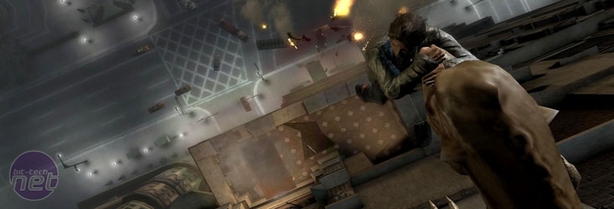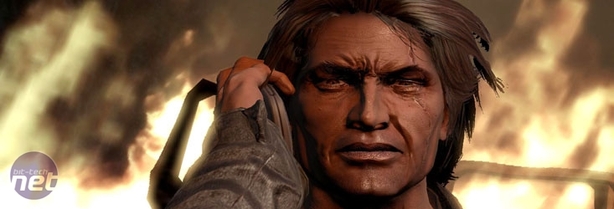
Alone in The Dark
Publisher: AtariPlatform: PC, Xbox 360, PlayStation 3
Full Review Here
Believe it or not, but some of us at bit-tech actually had some fairly high hopes for Alone in The Dark in the run-up to release.
It looked good, we thought. The graphics were crisp and moody, laced with more shadows than a forest at midnight, Alone in The Dark also boasted a fair degree of innovation. A physics-based combat system, an episodic-level structure and a game design that spanned multiple genres – Alone in The Dark seemed to have it all.
But it was buzzwords, the lot of it, and it was clunkily put together to boot.
Less of a remake and more of a reboot, Atari’s 2008 Alone in The Dark game sees players waking up in a hotel as it starts to burn to the ground. You are dazed and confused, amnesiac and trapped between a cliché and a hard place. There are people trying to kill you and a strange darkness that clambers the walls with a threatening menace. Oh, and zombies too.
All you have to help yourself is a leather jacket, a female companion who’s more useless than an ice sculpture in the desert and the world’s most awful inventory system. It’s on!
Alone in The Dark’s failures, unlike those of Grand Theft Auto IV PC, are failures of game design. In fact, we’d go so far as to say that it’s an epic failure because there really isn’t a single part of the game which works the way it should.
Combat is clunky and unwieldy, requiring players to swing melee weapons with the mouse and combine different items in the inventory as they fight – something that doesn’t pause the game, but just leaves you open to attack. You can play in third or first person, but neither feels fluid and finding hotspots is a pain either way. Not that bullets are going to help you a lot either, as just stepping into a shadow is enough to kill you nine times out of...well, nine.
The episodic structure is the gaming equivalent of shooting yourself in the foot too, opening up the entire game except the last levels from the start. Any part of the game you don’t like, you can skip – getting a rudimentary breakdown on the story via a quick video. The only thing the game really has going for it is the plot and the desire to see things through to the end, so the first thing the developers do is to make a Level Skip cheat a major feature?
The game jumps all over the place too, forcing you to undertake dozens of tiny microgames such as hotwiring cars and driving through crowded streets, each on more clumsy and mugfisted as the ones before.
Oh, and don’t even get us started on player damage – every time you get hit you look like some has glued bacon onto your jacket and, with a mystical first aid spray, you are wiping it off.
How To Fix It
This is a funny one because, if you’d asked us when the game was first released then we’d say that the game just needed some more play-testing and development time. The episodic structure, the mini-games, the handling; these things were all horribly realised, but essentially sound ideas. With some tuning they could have worked.Unfortunately though, the later PlayStation 3 release shattered that illusion. Even when aiming for a single dedicated platform and when taking the time to respond to the criticisms of players, the game still didn’t measure up to much. The game still had more holes than a Swiss cheese shop after a drive-by shooting.
What the game probably really needs, aside from a lot of patching and tweaking, is a generous amount of editing. It needs the broad, sweeping strokes of a designer’s red pen to swat away some of the more awful features from the game, leaving a much simpler game that doesn’t need to try so hard or fail so spectacularly.

MSI MPG Velox 100R Chassis Review
October 14 2021 | 15:04











Want to comment? Please log in.